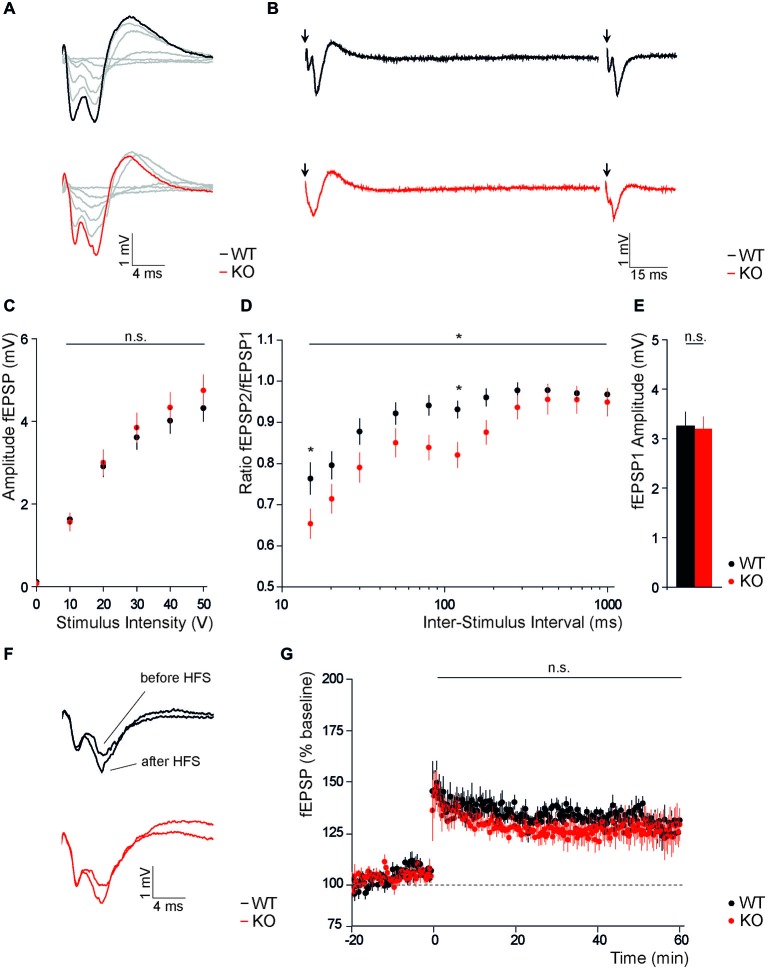Figure 4.
Disruption of Slc4a10 affects short term plasticity in the occipital and temporal cortex. (A,B) Representative traces of fEPSPs recorded in occipital and temporal cortical areas from WT and KO slices upon single columnar stimulations with increasing stimulus intensity (A) and paired stimulation with an interstimulus interval of 120 ms (B). (C) Absolute fEPSP amplitudes recorded in occipital and temporal cortical areas did not differ between genotypes (p > 0.05; n = 44/52). (D) The paired-pulse ratio was significantly decreased in brains slices of KO mice. This was most obvious at an inter-stimulus interval of 15 and 120 ms (p = 0.015; n = 40/50). (E) No difference was observed for the mean first fEPSP amplitude upon half-maximal stimulation (p > 0.05; n = 40/50). (F) Exemplary traces of fEPSPs recorded in cortical layers 2/3 of WT and KO slices before and after columnar high frequency stimulation. (G) LTP recordings from WT and KO slices did not reveal genotype dependent differences in the potentiation of cortical fEPSP amplitudes after high frequency stimulation. *p < 0.05.

